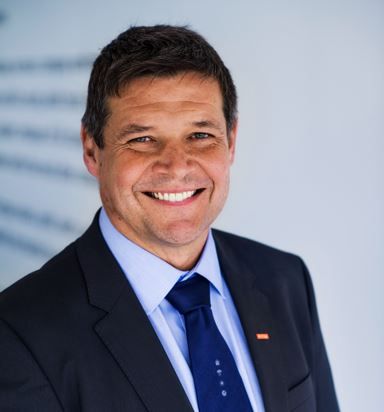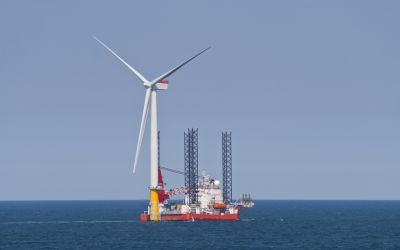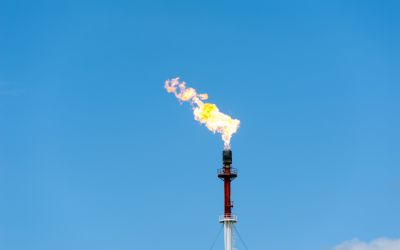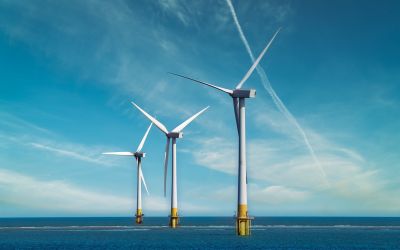VELUX Group: The key drivers needed to successfully decarbonise buildings
Ahead of the Sustainable Innovation Forum 2021, Climate Action asked VELUX Group what key drivers are needed to successfully decarbonise buildings. David Briggs, CEO at VELUX Group, will elaborate on this and also speak about the way forward to a carbon neutral and healthy built environment in a panel debate on November 8.

Ahead of the Sustainable Innovation Forum 2021, Climate Action asked VELUX Group what key drivers are needed to successfully decarbonise buildings. David Briggs, CEO at VELUX Group, will elaborate on this and also speak about the way forward to a carbon neutral and healthy built environment in a panel debate on November 8.
The building sector is critical to achieve decarbonisation targets. What will be the key drivers in successfully decarbonising buildings?
To succeed in achieving decarbonisation targets, the whole value chain in the building sector has to set goals soon to reduce its CO2 emission in line with the Paris Agreement.
Furthermore, government, regional and city authorities need to develop a solid framework for reducing carbon emissions in the built environment.
VELUX Group has set ambitious goals to meet the Paris Agreement by becoming a carbon neutral company by 2030 and reducing value chain emissions by 50%.
VELUX is also working in partnerships to show how to build sustainably and to set CO2 requirements for buildings throughout their lifecycle.
Do you have any exciting sustainability projects at the moment that you could tell us a bit more about?
The VELUX Group has partnered with Schneider Electric, the global leader in the digital transformation of energy management and automation, to help deliver on its target to source 100% renewable electricity by 2023 and to accelerate its commitment to become Lifetime Carbon Neutral. Schneider Electric is developing a global programme with zero-carbon action plans for each of the VELUX Group’s factory sites to successfully reduce their energy use and scale renewable capacity. Read more here.
To demonstrate our commitment to purchasing 100% green electricity, we signed up to RE100, a global corporate renewable energy initiative bringing together hundreds of large and ambitious businesses dedicated to using only renewable electricity in their operations. Read more here.
We have recently developed the Build for Life concept, which focuses on building a better and healthier living environment to benefit both people and the planet. It represents our views on the future of sustainable buildings and the elements that such buildings should provide, i.e. increased quality of life, daylight, and fresh air. Read more here.
What’s the role of technology and innovation in driving the development of more sustainable buildings?
Digital technology is increasingly at the forefront of VELUX Group’s product development. Integrating digital technology into our roof windows means they can automatically provide ventilation and natural light control through automated sensor-driven operation to create healthy indoor spaces. Our flagship digitalised product is called VELUX ACTIVE with NETATMO. It allows for the cross-checking of local weather forecasts, while smart indoor sensors monitor the temperature, humidity and CO2 concentration inside the home and activate a gateway to operate VELUX roof windows, shutters and blinds to improve the indoor climate. Read more here and here.
Furthermore, VELUX Group has a target for 30% of its roof windows to be sold by 2030 with software that enables sensor-driven automation to bring daylight and fresh air into buildings. Read more here.
VELUX Group is also working with suppliers and sub-suppliers on product and raw material solutions to reduce CO2 emissions and increase circularity of building products.
In 2023, VELUX Group will open a best-in-class innovation centre, which will provide an inspirational environment for around 500 employees to work on VELUX product development. Read more here.
How important are public-private partnerships in accelerating the decarbonisation of buildings? What leadership does industry (such as yours) need from governments?
Public-private partnerships are incredibly important in accelerating the decarbonisation of buildings. VELUX Group is a member of UNGC and is also signed up to the Science Based Targets initiative (SBTi), and is thereby committed to the Business Ambition for 1.5°C, the most ambitious reduction pathway. We are committed to become a 100 percent carbon neutral company (scope 1 and 2) and to halve carbon emissions across our value chain (scope 3) by 2030. Read more here.
From governments, we need direction and ambitious commitments and actions, for e.g. climate taxes. VELUX Group is in favour of a higher tax on CO2 emissions if the proceeds are used wisely to encourage the green transition to help deliver on the Paris Agreement.
How is VELUX working to engage homeowners to modernise buildings and renovate to improve efficiency? Why is this sort of consumer engagement important?
For more than two decades, VELUX Group has worked with sustainable buildings by inspiring the building industry and customers to create and require sustainable buildings and communities. This work continues to positively impact the buildings of tomorrow and to contribute to a more sustainable building sector. Providing inspiration by engaging consumers and advocating for sustainable buildings and communities is a strong lever for a green transition and quality of life. Read more here:
Can you tell us a bit more about what Velux is doing to reduce carbon emissions within your own operations? (opportunity to talk about becoming a lifetime carbon neutral company)
VELUX Group has partnered with the World Wide Fund for Nature (WWF) to capture its historical carbon emissions by investing in forest and biodiversity projects developed and managed by. The partnership with WWF will conduct a total of five major forest projects in tropical forest landscapes with high biodiversity value. These projects around the world will capture approx. 5.6 million tonnes of CO2e, including a 25 percent safety buffer. This is the equivalent of the VELUX Group’s historical CO2 since its foundation in 1941 and up to its 100-year anniversary in 2041 (scope 1 and 2). At the same time, the Group will reduce future carbon emissions in line with what science says is necessary and has a target to become 100% carbon neutral company by 2030. Read more here.
VELUX Group are speaking at the Sustainable Innovation Forum 2021, to join them register here now.






